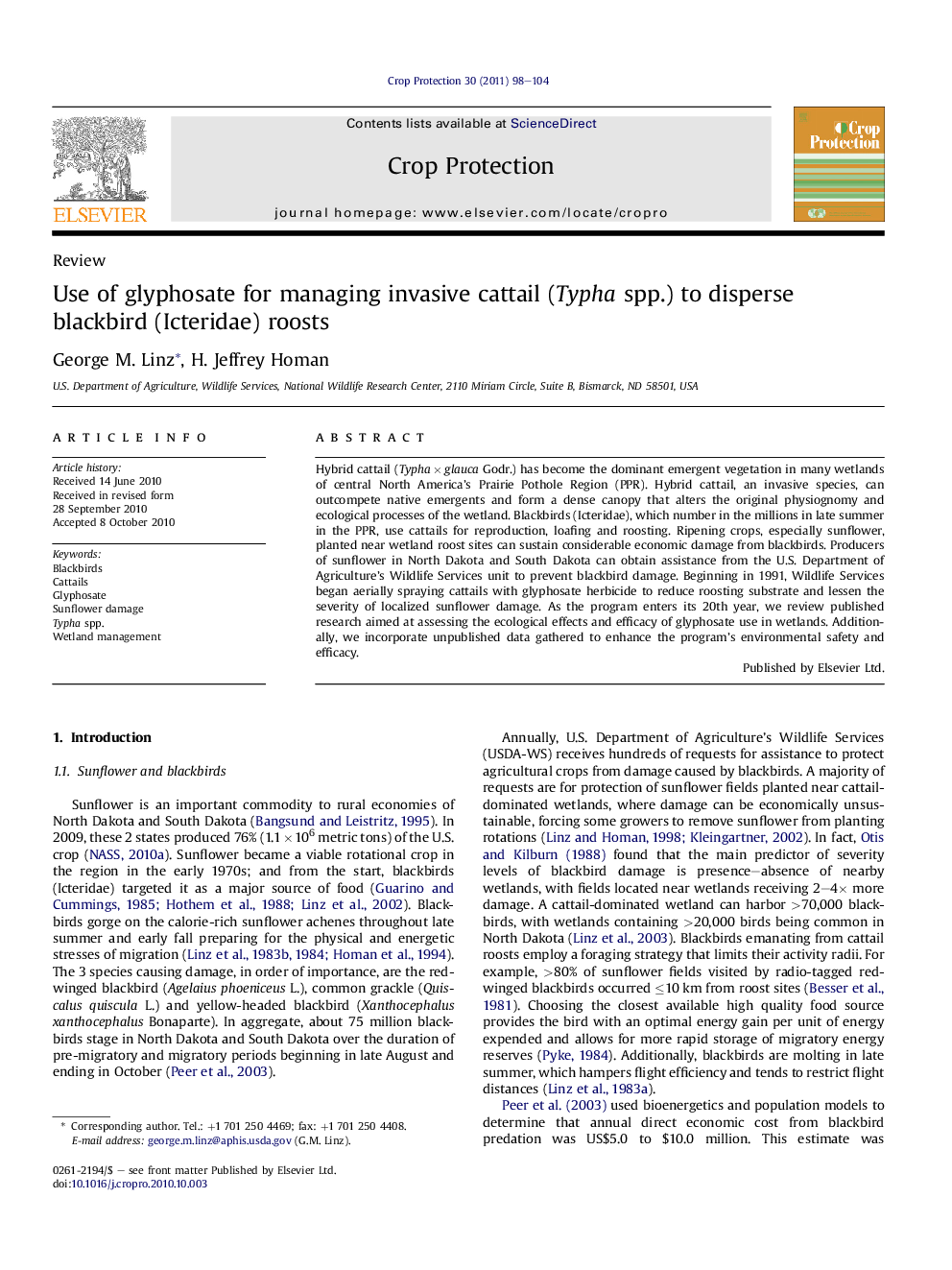| Article ID | Journal | Published Year | Pages | File Type |
|---|---|---|---|---|
| 4506640 | Crop Protection | 2011 | 7 Pages |
Hybrid cattail (Typha × glauca Godr.) has become the dominant emergent vegetation in many wetlands of central North America’s Prairie Pothole Region (PPR). Hybrid cattail, an invasive species, can outcompete native emergents and form a dense canopy that alters the original physiognomy and ecological processes of the wetland. Blackbirds (Icteridae), which number in the millions in late summer in the PPR, use cattails for reproduction, loafing and roosting. Ripening crops, especially sunflower, planted near wetland roost sites can sustain considerable economic damage from blackbirds. Producers of sunflower in North Dakota and South Dakota can obtain assistance from the U.S. Department of Agriculture’s Wildlife Services unit to prevent blackbird damage. Beginning in 1991, Wildlife Services began aerially spraying cattails with glyphosate herbicide to reduce roosting substrate and lessen the severity of localized sunflower damage. As the program enters its 20th year, we review published research aimed at assessing the ecological effects and efficacy of glyphosate use in wetlands. Additionally, we incorporate unpublished data gathered to enhance the program’s environmental safety and efficacy.
Research highlights► Aerial applications of glyphosate are economical and effective for managing cattails (Typha). ► Glyphosate applications can reduce size of blackbird roosts. ► Glyphosate is environmentally safe. ► Glyphosate reduces cattail stem density and as a result increases use by other avian species.
